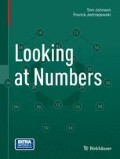Abstract
The art of juggling is the art of cycling several balls through the air in different ways, and for quite a few centuries jugglers were happy to do this in the most obvious ways. After learning to throw three balls, keeping each one in the air for three beats, jugglers went on to four balls, keeping each one in the air for four beats, and then on to higher and higher throws with more and more balls or plates or bowling pins or whatever. The result was spectacular, and very few people could ever learn to do it, but the arithmetic was pretty simple. This all changed in 1985, however, when a few smart guys in the Cambridge University amateur juggling club sat down and decided to analyze how many ways this could really be done if one looked at the problem mathematically. They devised a sort of flow chart known as “site-swap” and it became immediately obvious that balls could fly around in lots of new ways. For example, instead of throwing three balls always to the same height in continuous cycles of 333, as jugglers had been doing for centuries, they could throw them in a cycle of 441. This was quite a different rhythm, quite a different look, and not really harder than just doing 333 all the time. Soon hundreds of other new patterns became obvious, the new information circulated to all the continents, and people like the Australian, Konrad Polthier, even wrote books on the mathematics of juggling. Since I had been composing so many loops, and since many of my loops were quite juggleable, it seemed inevitable that I began to meet jugglers and wanted to collaborate with them.
Access this chapter
Tax calculation will be finalised at checkout
Purchases are for personal use only
References
Buhler, J., D. Eisenbud, R. Graham, and C. Wright. 1994. Juggling drops and descents. American Mathematical Monthly 101(6): 507–519.
Devadoss, S., and J. Mugno. 2007. Juggling braids and links. Mathematical Intelligencer 29: 15–22.
Duijvestijn, A. 1978. A simple perfect square of lowest order. Journal of Combinatorial Theory Series B 25: 240–243.
Polster, B. 2003. The Mathematics of Juggling. London: Springer.
Author information
Authors and Affiliations
Corresponding author
Rights and permissions
Copyright information
© 2014 Springer Basel
About this chapter
Cite this chapter
Johnson, T., Jedrzejewski, F. (2014). Juggling. In: Looking at Numbers. Birkhäuser, Basel. https://doi.org/10.1007/978-3-0348-0554-4_10
Download citation
DOI: https://doi.org/10.1007/978-3-0348-0554-4_10
Published:
Publisher Name: Birkhäuser, Basel
Print ISBN: 978-3-0348-0553-7
Online ISBN: 978-3-0348-0554-4
eBook Packages: Mathematics and StatisticsMathematics and Statistics (R0)

